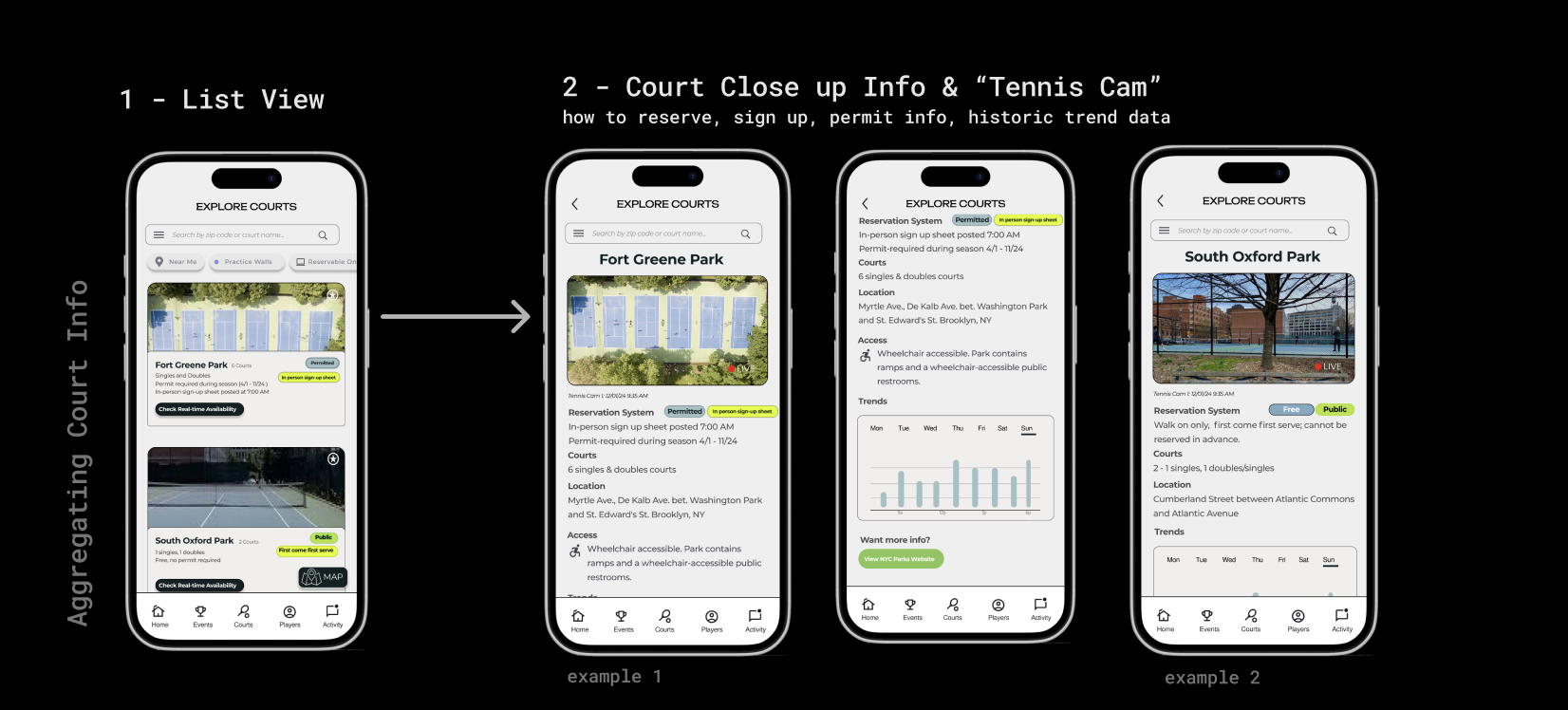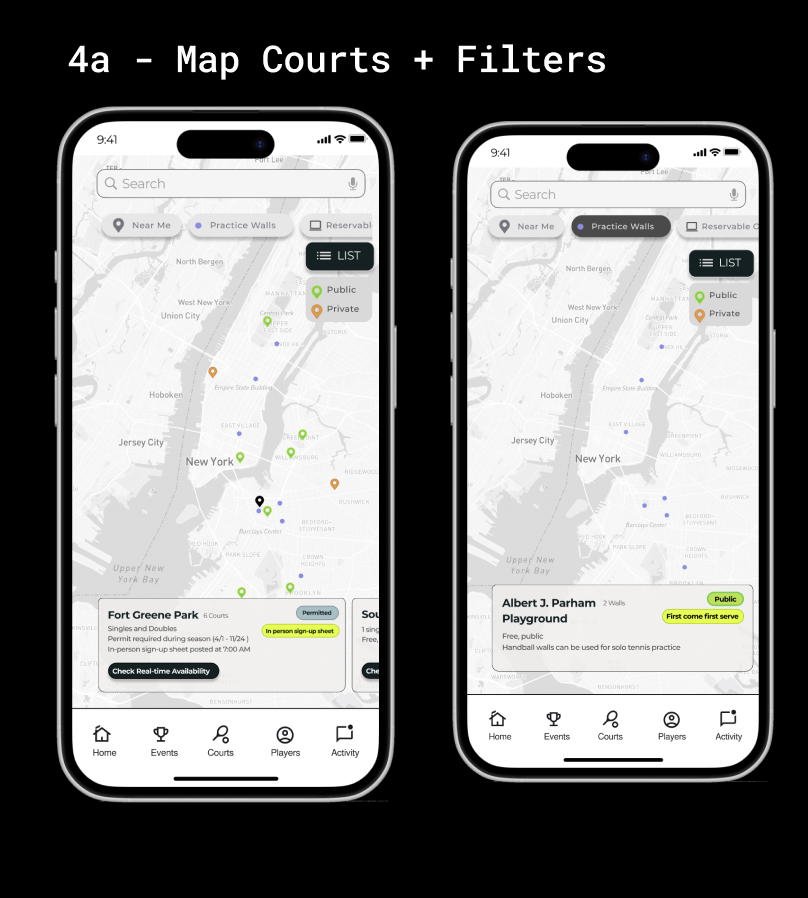On Designing for Usability: a UX/UI Project
DESIGNING AN IMPROVED TENNIS EXPERIENCE FOR NYC
Problem:
Playing tennis in New York City is tough and often confusing. It’s expensive, with limited court availability and high demand. The reservation systems are fragmented and inefficient—some are in-person, some online, and some are first-come, first-serve. Long wait times and early morning queues (starting as early as 6:30 am) are common. It’s also hard to find compatible playing partners, and there’s no centralized information about court availability and conditions.
User Research Insights:
15 survey respondents and 5 in-depth interviews revealed:
Most users rate current court booking satisfaction low (1-3 on 5-point scale)
Skill level matching is critical for partner finding (100% of responses)
Real-time availability is the most desired feature
Users struggle with decentralized information
Current apps don't solve core issues, none provide real-time data
3 User Personas, one highlighting accessibility.
Solution:
This is the first centralized tennis app built specifically for NYC's complex court system. Through live cameras, we show you real-time court availability so you never waste a trip, and help you find playing partners at your skill level.
A mobile app featuring:
1 - Real-time court availability via:
Live "tennis cam" (think surf cam) for walk-on courts or
Check-in system
2 - Consolidated court information:
Map view with robust filters
Clear reservation methods
Permit requirements
Historical “busyness” trends
3 - Player matching feature
4 - Event and tournament-finding feature
User Journey
Affinity Mapping
Wireframing
after sketching with pen and paper.
Prototype
Interactive prototype
created in Figma for user testing and evaluation.
Explore courts and the real-time availability via a list or map view.
More images and annotations below
Key screens
“Explore Courts” by list or map view with various filters (reservable, near me, court type). Upon clicking into a court, the real time availability via a live cam is shown as well as information on historic “busyness” trends and accessibility.


















